Missing the Bolo de Arroz from Mozambique cafes, Alyzee sets out to source a traditional Bolo de Arroz recipe and bake Bolo de Arroz for herself at home, complete with parchment paper moulds to unwrap from these delicious baked treasures.
Bolo de Arroz is a Portuguese rice cake popular in cafes and bakeries in Portugal, Mozambique, and Brazil. You’ll know it when you see it because of it’s characteristic cylindrical shape, golden crust, and wax paper wrap that often reads ‘BOLO DE ARROZ.’ (‘Bolo’ meaning ‘cake’, arroz meaning ‘rice’). Its unique shape and wrapping make it a singular member of the pastry world. It’s usually taller than a cupcake, and thinner than a muffin. It’s in a class all on its own. Bolo de Arroz! I love saying it.
They were a part of why I loved visiting cafes so much while I was in Mozambique.
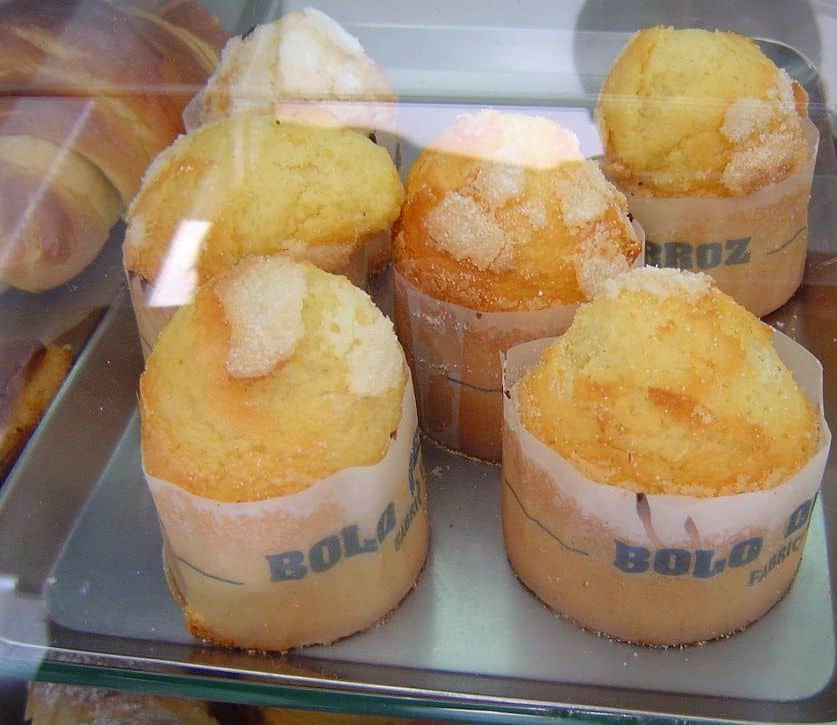
Researching Bolo de Arroz Recipes
So now that I’m far from cafes with delectable looking bolo de arroz-es in their windows, I had to set about making some of my own. I found there isn’t very much on the internet (in English) about recipes and guidance about how to make these cakes. With the questionable help of Google Translate, I looked to Bear’s Kitchen and Outra Comidas for general instructions to work from.
I learned that there are different versions of the cake: the traditional and the more commercialised bolo de arroz. The traditional cakes are denser than the adapted versions, which are airier and, from what I read, a bit greasier. Though I think they’d both be yummy, I was looking for a traditional recipe, and so made sure the instructions I used were from purists looking to restore the cake to its past glory.
Contrary to what the name of the cake suggests, it is not made with only rice flour. Most of the flour used is wheat, and to confirm this I asked to go into the kitchen of a little cafe in Mozambique so the cook could show me what he used to make my beloved pastries. The bag of flour he held up for my inspection was undeniably wheat flour. Anyone interested can find a wheat-free version of the recipe here. Because I was looking for a traditional cake, I followed a recipe that used wheat flour and was pleased with the results.
That said, one of my downfalls as a chef is that I don’t have a kitchen scale. And to my dismay, all the traditional bolo de arroz recipes I found used grams and millilitres. So I did a risky thing and used an online metric converter to turn grams and millilitres into cups. I’m going to include the measurements I used in the recipe here, but I would strongly recommend using a kitchen scale if you can get your hands on one. The dry to wet ratio seemed kind of off in the batter, and I am certain the results would be even better with more exact measurements.
Crafting Bolo de Arroz Moulds
While you can make these cakes in a regular muffin pan, or if you have one, a tall muffin pan, I wanted to have them in the traditional shape with the pleasure of tearing the paper away, and so I made the moulds myself using parchment paper. I am indebted to these instructions on how to do so.
Bolo de Arroz Mould Supplies
If you don’t want to make your own moulds, skip ahead to the cake recipe below. If you do, you’ll need:
- Parchment Paper
- A paste of flour and water
- A can or vitamin bottle, about 2 inches in diameter
- A pencil and some scissors

Instructions for Crafting Bolo de Arroz Moulds
- First trace the bottom of the can onto the parchment paper to make a circle. Each mould will use two of these circles. As I was making 8 cakes, I traced 16 circles.
- Next roll the can with the parchment paper so that it is covered with some overlap. With the can still wrapped in the paper, coat the overlapping paper with the flour paste and glue it around the rolled up can to make a cylindrical casing.
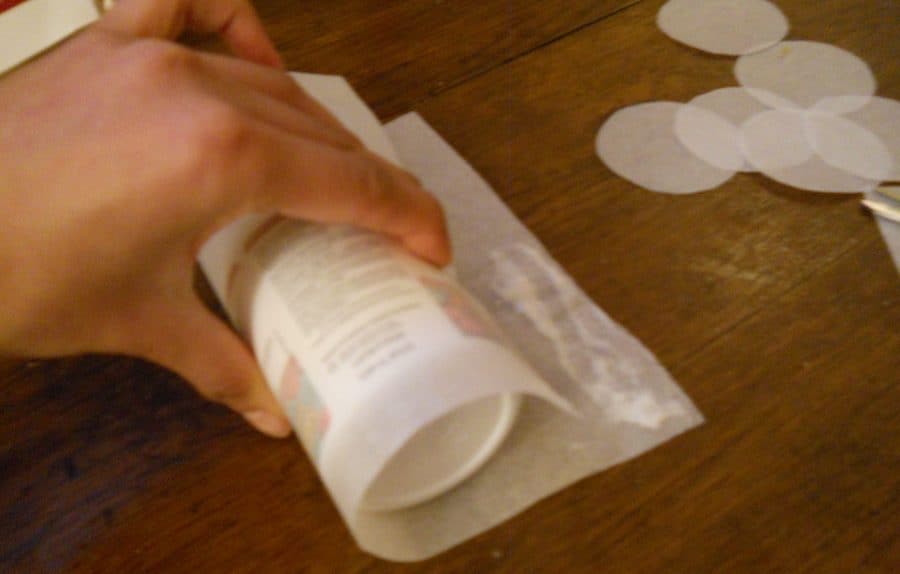
- Slide the casing over the can so that there is about a centimeter of parchment overhang. Cut slits into it on all sides, about 3-4 in all. Place one of the circles on the bottom of the can and coat its edges with flour paste. Then fold the parchment down onto the circle. Put more paste onto the folded parchment and press another circle onto it. That is the base of your mould.

- Wait a minute before carefully sliding the can out of the mould and putting it aside to let it dry. That is your first mould! Repeat 8 times.
Traditional Bolo de Arroz Recipe
(Makes about 8 cakes)
Bolo de Arroz Ingredients:
- Butter (softened), 100 gr (7 oz)
- Sugar, 200 gr (1 cup)
- Eggs, 2
- Egg yolk, 1
- Milk, 200 ml (4/5 cup)
- Flour 200 gr (2 cups)
- Rice flour, 200 gr (1.25 cup)
- Baking powder, 1 envelope (1 tablespoon)
- Baking soda, a pinch of
- Salt, a pinch of
- Lemon zest (finely grated), from 1 lemon
- Lemon juice, from 1/2 a lemon
- Powdered sugar, for dusting
- Teaspoon vanilla essence (optional)
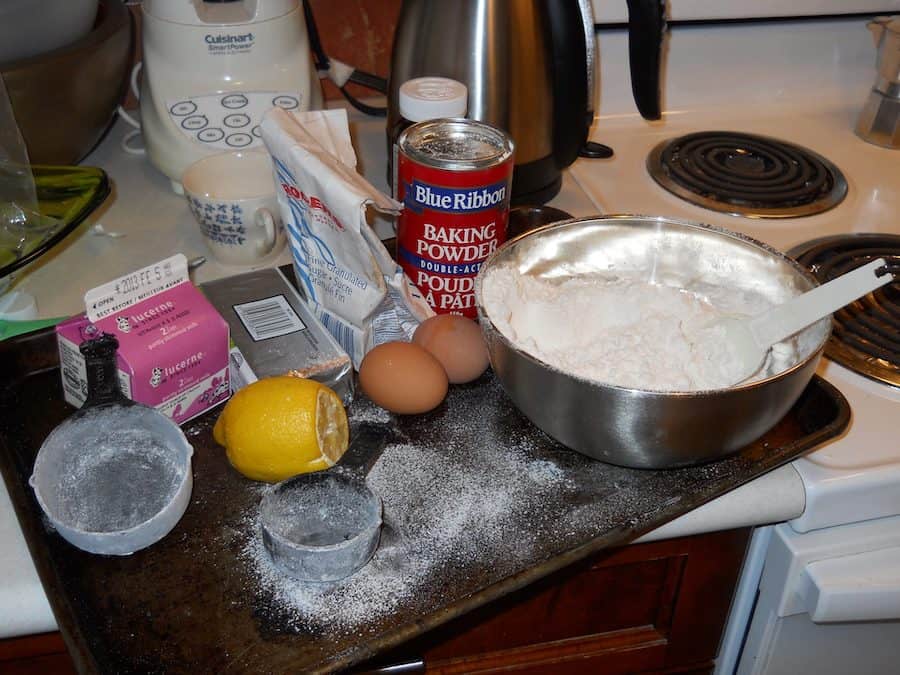
Bolo de Arroz Recipe
- Preheat oven to 180 C or 350 F.
- Sift the flour, rice flour, baking powder, baking soda and salt into a bowl, mix well, and set aside.
- In a large mixing bowl cream together butter and sugar until fluffy, using an electric beater.
- In a third bowl beat together eggs, milk and vanilla, if you are using it. It helps if the eggs are room temperature, so keep them outside the fridge for an hour or so before you start.
- Next add the egg mixture to the butter and beat it in.
- Then add the lemon juice and zest, and mix.
- Add the flour mixture in gradually and mix until all the flour is incorporated. The batter will be pale yellow. Mine was thicker than anticipated (a problem I think might be solved by using a kitchen scale to measure the flours).
- You can trim the parchment paper so that there is just one inch of it above the batter line, or trim it after baking, like I did.
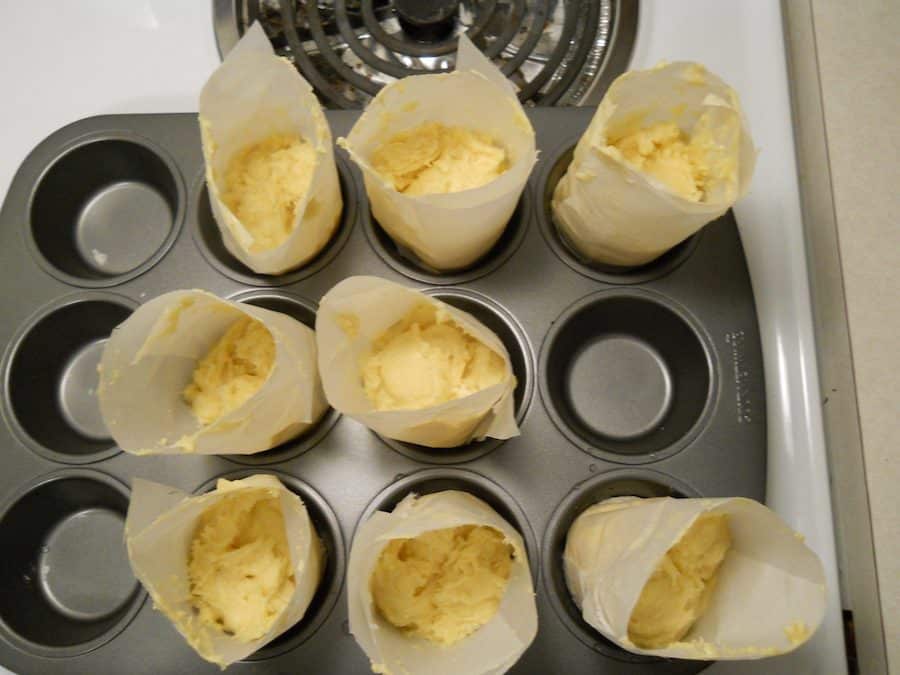
- The recipe said to bake for 20-25 minutes, but my cakes took longer before the toothpick came out clean — about 40 minutes.
- When they were done I took the tray out of the oven and sprinkled icing sugar on top.
- They still looked pale yellow so I broiled them at 500 F for two minutes to give the cakes their emblematic crust. It worked perfectly.
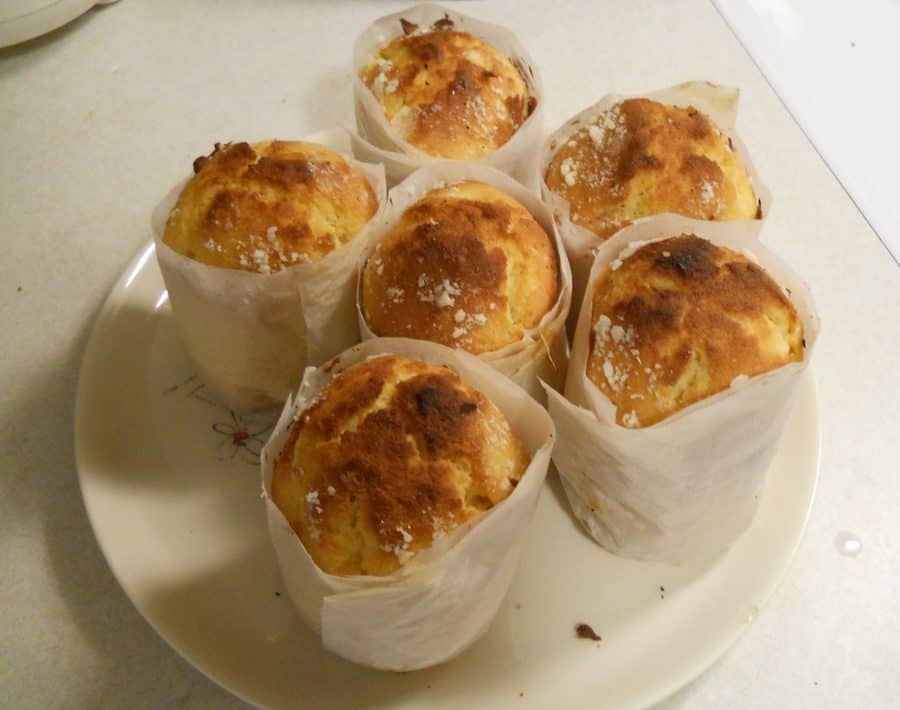
I distributed them among friends and the consensus was that they were crumbly, lemony and very tasty. They smelled so good too. I don’t think I would go through the trouble of making my own moulds again, but I will definitely make the cakes again.
If you try the recipe out, do share how it worked for you and if you made any modifications to them. Enjoy!
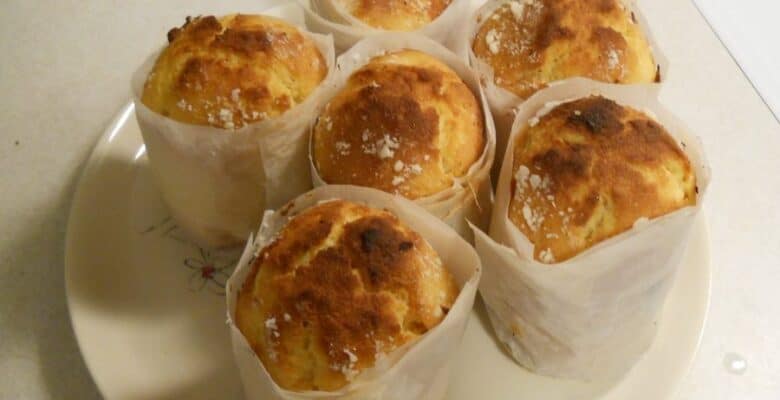

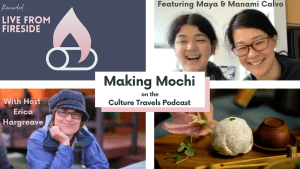
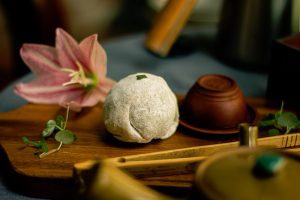
I’m forwarding this recipe to my (pastry chef) daughter. She loves exploring new foods. Thanks!
Thanks Lane! I hope she likes it. It must be wonderful to have a pastry chef in the family.
Thanks for the recipe! This looks so good.
If I had a pastry chef in the family I would be doomed!
On an unrelated note: Have you been to Paris? If you or any of your fellow travellers and bloggers have I am hosting a monthly giveaway and would love for your to participate. 4 more days until February’s giveaway ends.
Murissa
Thanks Murissa, no never been to Paris. Not yet anyway. It’s on my Someday list. Thanks for reading! PS: Your Venice pictures are beautiful.
that looks absolutely delicious, I’m going to try out the recipe.
Great, let me know how it turns out!
Very cool, recipe! I love that you created your own molds. It looks way cooler than a muffin cup! I wonder if you could have decorative parchment paper.
Thanks Michaela. I have to say those moulds tried my patience, so its really good to hear someone appreciate them. Decorative parchment paper. . . there’s a thought. I guess you’d have to be careful that the decoration on the paper didn’t bleed into the cakes – might be dangerous if it were a dye or chemical. But I’m sure there’s room for innovation there & they?d definitely look way more impressive with prettier paper. I’d love to hear any ideas you have about it & how the recipe turns out if you give it a go. Happy baking!
Eating my first bolo de arroz of all places in Durham UK! Loved it so much I Googled and found your recipe. Thanks will try it at home!:-)
Hey Ryta, glad you fell for Bolo de Arroz the same as me. And that you can find them in the UK, who knew? My first instinct was to google it too, and I found most pages about it were in Portugese. Thanks for reading!
I loved this Bolo De Arroz. I finally have the recipe but wanted to know what other type of paper can I use and can I use skim milk in the recipe?
Love these. I wanted to know if I can use any type of paper and can I use skim milk?
Hi Rose,
Glad you like the recipe 🙂 I would stick with parchment paper because I haven’t tried any other and don’t know if another paper would burn before the batter was cooked. I suppose you could use wax paper, but I’d rather not worry about wax getting into the batter so would prefer parchment. If you do try another paper and have success with it, please let me know!
Yes, I think you could replace the milk with skim milk without a problem. Or even almond or soy milk — any kind of milk really. Would love to hear how the recipe turns out for you.
BEST recipe to making it.. very delicious.. cant wait to make it by myself
Thanks! Glad you will try it, I’m sure yours will be delicious.
YUM! These cakes look so good! And your photos are stunning. It’s simple and easy to follow. Thanks for your detail guide!
Thank you! I`m so glad you found the recipe easy to follow. Hope you do try them out, they are really unique little cakes.
Thanks for sharing this receipe. When ever i go to Portugal my morning does start unless i have a maio do late and a bollo de arroz. I have always wanted to try and bake my own, cant wait to get started:)
Thanks Nick! Glad you’re excited about making your very own bollo de arroz. I’m sure they will be delicious.
I am Brazilian and I love bolo de arroz, is a vrey popular recipe here.
This looks delicious! I love how you’ve shared not just the recipe, but the cultural connection behind Bolo de Arroz. It’s always fun to try new foods from different places. Can’t wait to give it a try!
Petir hack games Online Real Chess Merupakan permaianan terbaik dengan grafik yang epic akan membawa anda kedunia percaturan. Games ini juga sangat banyak diminati para penggemar catur didunia terutama Indonesia.